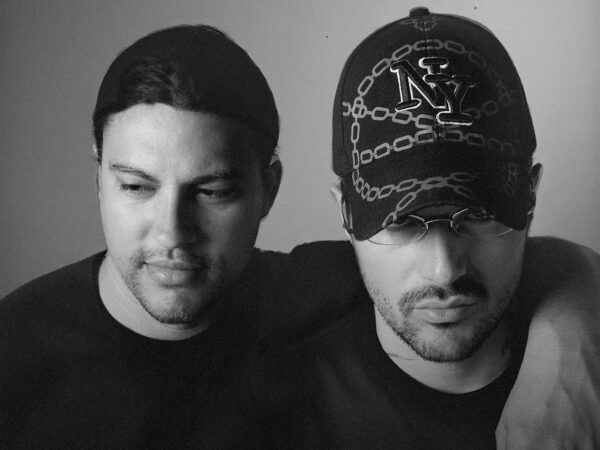Indie social media found a way to ditch the algorithm. Why aren’t we signing up?
When I talk to people about the social media experience that they crave, they point back to their days on Tumblr. In the collective memory of millennials, Tumblr represents a kind of utopian meadow where people went to gather beautiful images and important knowledge. I did the same. Like a dedicated peasant searching for firewood, I would sift through thickets of scroll to harvest cinema screen grabs, contemporary art, Marxism, socialism, anarcho-primitivism, fanfiction, pictures of cottages, burning forests, ball-jointed dolls, anorexic girl thighs, GIFs of butterflies. I learned what I liked with each twitch of my finger to the alt key: reblog. At the time, I was trying to become a person—building my future self through the things I put into my feed. It was nutritive. It “died.”
What do we have now instead? Twitter, Instagram, TikTok. Addictive, politically noxious, culturally numbing, because “algorithms.” WIRED’s Cory Doctorow called this algorithmic turn on social media “enshittification,” The New Yorker’s Kyle Chayka termed it “the flattening,” The New York Times’s Jon Caramanica described TikTok’s For You Page as a “junk drawer” that’s only getting junkier by the second. These thinkers tell us platform death is nie. Users are asking, Where do we go next?
For those who want Twitter without the algorithmically propped-up pundits and broken newsfeed, there’s Mastodon, Blue Sky, and Post, all of which sell themselves on their differing approaches to algorithms, whether by offering customization or avoiding the algo completely.
Then there are smaller-scale social media apps with creative director vibes like PI.FYI, recently launched by the Perfectly Imperfect newsletter founder Tyler Bainbridge, studio and /chan, two offerings by the artist Lucien Smith, and ID by Amo, a small Paris-based startup, none of which use algorithms. And then there’s the more general project of Web3, which in its best iteration is an attempt to create an internet without middle-men—platforms and advertisers—where people can self-govern their sociality online (the motto of Mastodon, a decentralized outfit active since 2016, is ‘Social networking that’s not for sale’).
For what it’s worth, Tumblr is also literally right there, waiting to be resuscitated. Supposedly we all miss it and credit its chronological, non-algorithmic infrastructure for all that good culture and conversation (even the annoying discourse, the furries and the fandoms are embalmed in adoring memory).
Yet in a market full of algo-free options, mass adoption remains elusive. The rise of a successful platform always seems effortless. The whole world is doing it, beckoning you to step into whatever infinite scroll is on offer there. Though PI.FYI has gained a cult following and Blue Sky is home to a niche set of humanities scholars, there is a critical degree of friction preventing the kind of social media great migration we seem to be longing for. It begs the question: If we’re so unhappy, why aren’t we leaving?
“That we speak of platforms as ‘dead’ even as their infrastructure remains in place is a testament to the critical mass of human activity that animates the internet, a hand flush and wiggling in a leather glove.”
Insecure attachment. There’s a kind of mass psychology at play here: like children raised by intermittently available parents, we cling to the toxic but (hopefully) permanent thing. The internet is a big and varied non-place, yet our collective memories of platform adoption and abandonment inform how we move around these online spaces. Even if most of us, at least here in the US, were pulled into school assemblies about the dangers of posting (“The internet is forever”), the fact is that to be online is to be confronted with something devilishly ephemeral. The communities we once knew, which were hosted on now inert websites, have disappeared, along with the content that defined them. In Everything I Need I Get From You: How Fangirls Created the Internet as We Know It, Atlantic staff writer (and proud One Directioner) Kaitlyn Tiffany wrote about the difficulty of finding the memes and posts that had defined the active fandom she had been a part of. She describes wading “through shards of information and broken links,” to find the cultural artifacts of her past and the intense feeling of relief when she was able to find an old, beloved meme.
Even the platforms we actively use buck under us: Animations, fonts, button placement, and graphics are tweaked. “The algorithm” feeds content into our timelines in a certain way one day, only to shift to something completely different the next. Despotic owners change the goddamn name of the place.
This constant instability is in heavy tension with the investment that being online requires. That we speak of platforms as “dead” even as their infrastructure remains in place is a testament to the critical mass of human activity that animates the internet, a hand flush and wiggling in a leather glove. To imbue something with this kind of life requires social action, which some Marxists term as a kind of labor. As the digital theorist Tiziana Terranova argued in her seminal 2000 paper, the internet is animated by the free labor of users, which is then leveraged for profit by owners of infrastructure.
“The best website, the best way to stay visible and thriving on the web, is to turn your site into a space that is not only accessed, but somehow built by its users,” wrote Terranova. “Users keep a site alive through their labor, the cumulative hours of accessing the site (thus generating advertising), writing messages, participating in conversations, and sometimes making the jump to collaborators.”
Terranova sought to cut through the optimism of Web 1.0. In those heady Y2K days, theorists thought that because content was free and no one was getting paid these were somehow sites of non-capitalism (lol). By 2007, anthropologist Alice Warwick began studying Web 2.0 by observing how early Silicon Valley influencers like Kevin Rose, Melissa Gira Grant, Leah Culver, Tara Brown, and Gary Vaynerchuck were using Twitter to build social status and authority.
In her 2013 book Status Updates: Celebrity, Publicity, & Branding in the Social Media Age, Warwick concluded that Web 2.0 constituted a Foucauldian technology of subjectivity, where people were rewarded for fitting into ideal neoliberal selves. This is to say, if technologies of subjectivity are the techniques we employ to fit into normative society, the normative state of Web 2.0 is an explicitly neoliberal one. In it, we are encouraged to develop the “personal brand”—the self as entrepreneurial business outfit of one. Accordingly, people have good reason to continue investing in platforms where they already have a following, and through their posting keep those platforms alive in turn.
Not everyone is in pursuit of micro-celebrity. But even normies invest in their platforms. In preparation for this piece, I began asking people if they were dissatisfied with their social media experience and if so, why they weren’t moving onto alternative apps. The resounding answer was that it felt like too much work. What’s too much work? Posting for no one, engaging in a social field that feels empty, and for that reason, likely to disappear. In the context of an internet where only the behemoths seem to have any lasting power, building one’s online self on a new platform seems like a weird gamble that’s only really worth it if being online is a career (early adopters of new platforms have a lot to gain) or if you’re a kid.
“Tweens were dancing on [TikTok] in a way that reminded me instantly of the Photo Booth music videos the popular girls in my school would upload to Facebook. They click and post with total impunity: no filter.”
It’s my pet theory that kids run the internet. That’s why most of the culture coming out of it feels so inherently regressed: it’s age-appropriate. If Terranova believed mass social action animates the internet, children and adolescents are the bedrock of that labor, the nuclear reactor of engagement, and, I’d argue, platform adoption.
Of the top ten most subscribed to YouTube channels, six of them have majority-minor audiences: Mr. Beast, Cocomelon, Kids Diana Show, Like Nastya, Vlad and Niki, and PewDiePie. Ryan Kahi of Ryan’s World (formerly Ryan ToysReview) got profiled numerous times as a seven year-old in 2018 after his toy-unboxing channel racked up billions of views and millions of dollars. Adults bemoan their inability to curb their screen time, I’m not even sure if children have that goal to begin with. iPad kids click and so do teenage girls. When TikTok flamed into life my immediate impression was, That’s a kid’s app. Tweens were dancing on there in a way that reminded me instantly of the Photo Booth music videos the popular girls in my school would upload to Facebook. They click and post with total impunity: no filter. That is to say, they do a good job of animating platforms. And unlike the grown-ups, they have little to no personal memories of the ephemerality of the sites that they love and use and as such are less concerned about hedging their investment.
Developers, whether or not they are consciously designing for children, tap into what appeals to them. Their minds are fit for the manic pace of algorithmic culture and the weird cults of personality they offer.
When my sister was 12, I tried to get her on Tumblr, hoping she would have the formative and gentle entré into online life that I had enjoyed. She didn’t like it. Where was the engagement, the follower counts, the personalities shelling shit-inducing pink sauce? She’s 14 now and active on Instagram, TikTok, and Snapchat, which gives her a mix of private and public sociality: her classmates and influencers. They also offer random jackpots of semi-virality. Thrillingly, a video of her and her friend lip-syncing to a song once got 5,000 views on TikTok. She is encouraged to track the success of the posts of others and sends flares about her social and emotional state into the ether with her reposts. Her classmates do the same.
The reason we’re not (yet) seeing the intentional adoption of what might be a healthier, non-algorithmic app is that they’re built by adults for adults, and adults don’t adopt, at least, not en masse. Meanwhile, these non-algorithmic platforms have little fame and attention to offer the youth whose participation is so sorely needed.
“We are stuck between the desires we have for our online experience and the forced passivity now built into the platforms we’ve spent years investing ourselves in.”
TikTok users Doctorow and Caramanica both claimed that the platform’s algorithm had junkified it a shade too far, suggesting that the app’s reign would soon come to an end (Doctorow said this last year, Caramanica just in this past month). I’m not saying they’re wrong, Tumblr’s own demise certainly took years of people posting that they were leaving the “hell-site” before they actually did it (I see the same kind of posts on Twitter now). Yet, I wonder what platform death looks like in the age of algorithms. People animate the internet, but now, so do non-humans.
I experienced Tumblr’s death as a slow bleed. Gradually there were less people. Had it been algo-fied at that critical moment, would I have thought the platform was done for even as the people I liked best on it abandoned it, even as the content became worse? Then, there’s the Dead Internet Theory, which proposes that it’s not just individual platforms that “die” but that the internet as a whole was shot and killed around 2016 or 2017 when, it is said, that the majority of online activity became driven by bots and generated content boosted by algorithms. Wikipedia says it’s a conspiracy theory but I find it convincing.
It’s no surprise that the idea came in the wake of the Cambridge Analytica scandal, which revealed that the British consulting firm had analyzed the data of 50 million Facebook users, which Russian parties then used to produce and disseminate content with the intent of manipulating the 2016 elections in favor of Trump, who kisses Putin on the lips every night when he gets projected, Blade Runner 2049 style, onto the body of Melania.
This month, the AI researcher Yoshija Walter published a short opinion piece in the peer-reviewed journal AI & Society, in which he wrote that “10 years ago, the [Dead internet] theory used to be rather speculative, but with the wake of generative AI, it can now be observed first-hand.” He wasn’t making the claim that generated content had come to represent the majority of internet activity, but that it was present and growing.
What’s left for us? We are stuck between the desires we have for our online experience and the forced passivity now built into the platforms we’ve spent years investing ourselves in. The kids who shape the internet are bred of different stuff, and will probably not save us and decide that non-algorithmic social media is the future. We pumped space full of junk and the non-space of the internet, too. It’s all black void piled with metal and human shit. And we’re here on Earth like we don’t have any options. We don’t have to be in space or online. Turn to each other now.
Just kidding. There is no pure place: we crave the end because it seems cleaner on the other side. We all live,and have always lived, in the muck—even and especially after death. Download the niche app, participate in the empty-ish forum. Labor to make the experience you want. Labor to animate a human internet.


















